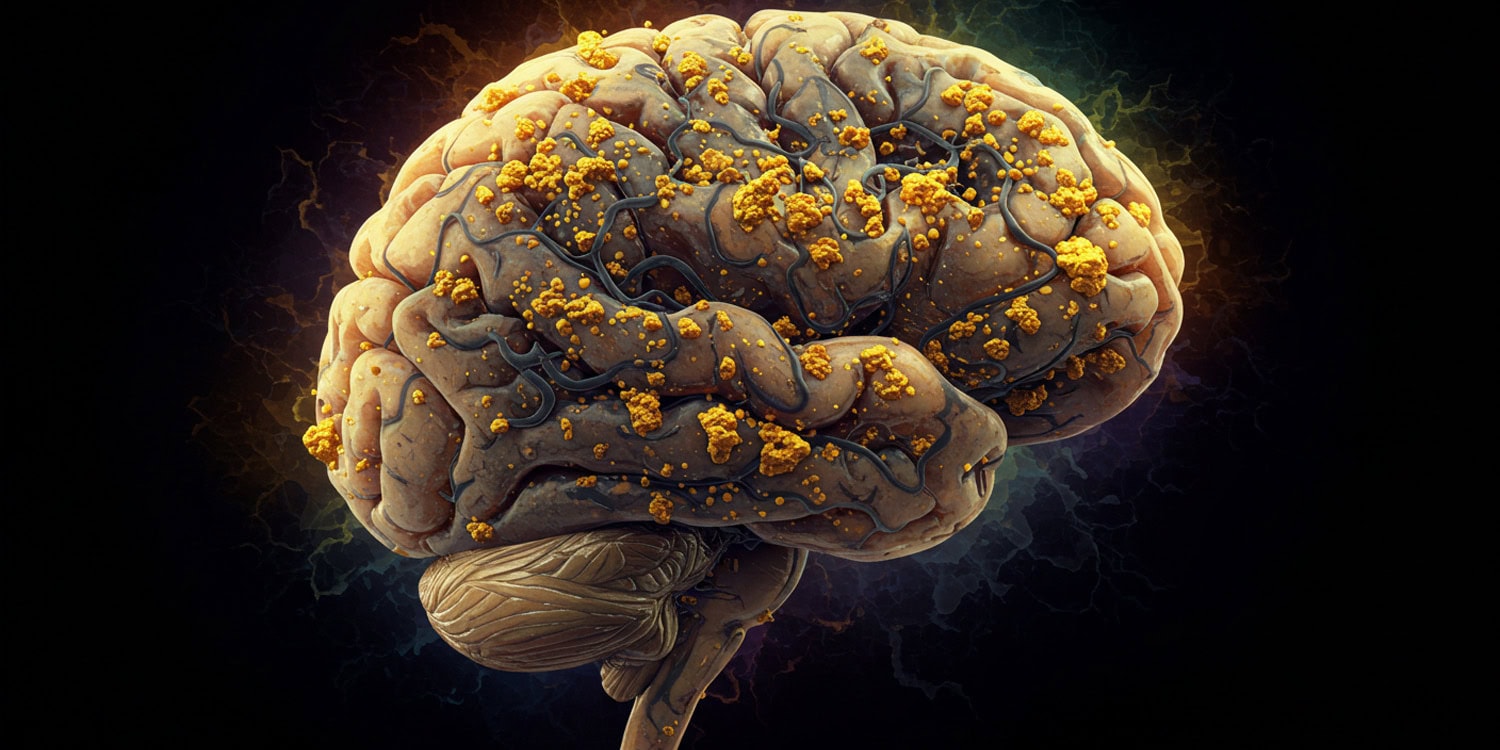New research suggests that consistent aerobic exercise could be a powerful tool in reducing the biological signs associated with Alzheimer’s disease. A study conducted by scientists from the University of Bristol in the United Kingdom and the Federal University of São Paulo in Brazil has found that regular physical activity significantly lowered markers of Alzheimer’s disease in laboratory rats. These encouraging results offer renewed hope for developing effective strategies against this debilitating brain disorder, indicating that exercise may protect brain cells and restore balance in aging brains.
Alzheimer’s disease, a progressive condition that erodes memory, language, and thinking abilities, currently lacks a cure. Symptoms develop gradually, and brain changes related to the disease can begin decades before any outward signs appear. This long preclinical phase underscores the urgency of finding preventive measures. While lifestyle interventions such as diet and physical activity have been explored as potential preventive approaches, the number of people living with Alzheimer’s continues to rise, highlighting the limited success of current treatments and preventive strategies.
Understanding how to prevent or slow down Alzheimer’s is therefore a critical public health challenge. Scientists are working to identify risk and protective factors and create reliable ways to predict an individual’s risk of developing dementia. Notably, mortality rates from Alzheimer’s are increasing, contrasting with declines seen in other major diseases like heart disease and some cancers. This stark trend underscores the pressing need for effective ways to tackle Alzheimer’s.
For many years, the buildup of amyloid plaques and tau tangles in the brain has been considered the hallmark of Alzheimer’s disease. However, it has become clear that these deposits alone do not fully explain the disease, as some individuals with these brain changes never develop Alzheimer’s symptoms. More recently, scientists have turned their attention to the degeneration of the myelin sheath, the protective covering around nerve fibers, as a potential factor in Alzheimer’s.
Damage to myelin and the cells that produce it, oligodendrocytes, seems to occur even before the accumulation of amyloid and tau. Oligodendrocytes are known to contain high levels of iron, and their breakdown could release iron, potentially contributing to amyloid problems. Problems with the brain’s chemical signaling systems may also play a role in the early stages of Alzheimer’s. Given the complexity of Alzheimer’s and the various hypotheses surrounding its development, researchers are exploring multiple avenues to understand and combat the disease. This particular study focused on the amyloid, tau, and iron hypotheses, investigating how physical exercise might influence these factors in the brain.
This line of research is particularly meaningful for scientists, such as the study’s lead author, who have witnessed the impact of Alzheimer’s firsthand.
“I spent much time with my grandparents and other elderly people as a child. From an early age, I paid special attention to the health of the elderly people I loved. As an adult, I took care of my elderly parents and experienced the difficulties that both of them had when they developed dementia,” said study author Robson Campos Gutierre, director of the Almeria Institute of Integrative Science.
To explore the potential benefits of exercise, Gutierre and his colleagues used a group of aged male rats, approximately equivalent to middle-aged humans. Ten rats were divided into two groups: an exercise group and a control group. The exercise group underwent an eight-week aerobic exercise program on a treadmill, five times a week. Before starting the formal exercise program, the rats were familiarized with the treadmill over three days to reduce stress and ensure they could run.
The researchers assessed each rat’s running ability and only included rats that demonstrated they were capable runners in the exercise group, ensuring that any observed effects were due to exercise and not stress differences. The exercise sessions started with a warm-up and gradually increased in duration and intensity over the eight weeks. The control group did not exercise but was handled in a similar way to the exercise group, including being placed on the non-moving treadmill to control for any stress related to the experimental environment.
After the eight-week exercise period, the researchers examined the rats’ brains. They used specific staining techniques to visualize and measure key markers associated with Alzheimer’s disease in the hippocampus, a brain region critical for memory. Beyond simply identifying these markers, the researchers used a stereological method, a sophisticated technique for accurately counting cells and measuring volumes in three-dimensional structures like the brain. This method allowed them to precisely quantify the volume of amyloid plaques and tau tangles, as well as count different types of brain cells: neurons (specifically pyramidal and granule neurons), oligodendrocytes, and microglia (immune cells of the brain).
The results of the study revealed striking differences between the exercised and sedentary rats. The rats that engaged in regular aerobic exercise showed significant reductions in all the key Alzheimer’s markers examined. Specifically, they had approximately 63% less tau tangle volume and about 76% less amyloid plaque volume in their hippocampus compared to the control group. Iron accumulation in oligodendrocytes was also dramatically reduced, by roughly 58%, in the exercised rats.
Furthermore, the researchers observed positive changes in brain cell health in the exercise group. The number of healthy oligodendrocytes, the cells responsible for producing myelin and protecting nerve fibers, was significantly higher in the exercised rats, about twice as high as in the control group. Conversely, the number of oligodendrocytes showing iron accumulation was significantly lower in the exercise group, about half the number found in the control group. In terms of neurons, the exercised rats had approximately two and a half times more normal pyramidal and granule neurons compared to the sedentary rats. Importantly, the number of neurons affected by tau tangles was about four times lower in the exercise group.
The study also examined microglia, the brain’s immune cells, which can become activated and contribute to inflammation in Alzheimer’s disease. The researchers found that the number of microglia in a phagocytic state – indicating they were actively cleaning up debris or harmful substances – was significantly reduced in the exercised rats. Different staining methods for microglia revealed that exercised rats had fewer microglia containing iron and fewer microglia containing general cellular debris, suggesting reduced brain inflammation and cell death. Interestingly, the number of non-phagocytic microglia was somewhat higher in the exercise group, which might indicate a shift towards a less inflammatory and more supportive role for these cells.
Finally, the researchers investigated the relationships between different brain measurements. They found that exercise appeared to improve the natural communication between neurons and oligodendrocytes, and to shift the relationship between amyloid and iron from a negative to a positive association, suggesting a beneficial change in how these factors interact in the brain after exercise. In sedentary rats, there were negative correlations between iron in oligodendrocytes and non-phagocytic microglia, and between iron in oligodendrocytes and overall phagocytic microglia. However, in exercised rats, there were positive correlations between iron in oligodendrocytes and phagocytic microglia, and between neurons and non-phagocytic microglia. These complex relationships point to a fundamental shift in brain cell interactions induced by exercise.
“Our research assessed how various factors involved in Alzheimer’s disease interact with physical activity,” Gutierre told PsyPost. “We reaffirmed its preventive and therapeutic potential, as all factors changed positively. We also demonstrated that excess iron accumulated in a specific cell type, oligodendrocytes, can cause brain damage related to Alzheimer’s.”
The researchers acknowledge that their study has some limitations. Using aged rats, while valuable for studying aging-related changes, is not a perfect model for human Alzheimer’s disease. Rats do not naturally develop Alzheimer’s in the same way humans do, and the study did not use rats genetically engineered to mimic Alzheimer’s pathology. Nevertheless, the findings provide important insights into fundamental biological processes that are likely shared across species.
The researchers are now planning clinical trials in humans to test if regular aerobic exercise can produce similar beneficial effects on Alzheimer’s markers in people. They are also interested in developing drugs that target iron metabolism and cell death pathways, based on their findings that iron accumulation and cell death are significantly impacted by exercise and are likely important targets for Alzheimer’s therapies.
“In the long term, we would like to use our statistical data for application in pharmacological therapies and to indicate different physical exercise protocols,” Gutierre said. “I want to clarify that the iron data in this study do not directly refer to the amount of iron ingested through the diet. The iron measured likely originated from red blood cells that left blood vessels damaged by aging.”
The study, “Tau, amyloid, iron, oligodendrocytes ferroptosis, and inflammaging in the hippocampal formation of aged rats submitted to an aerobic exercise program,” was authored by R.C. Gutierre, P.R. Rocha, A.L. Graciani, A.A. Coppi, and R.M. Arid.




